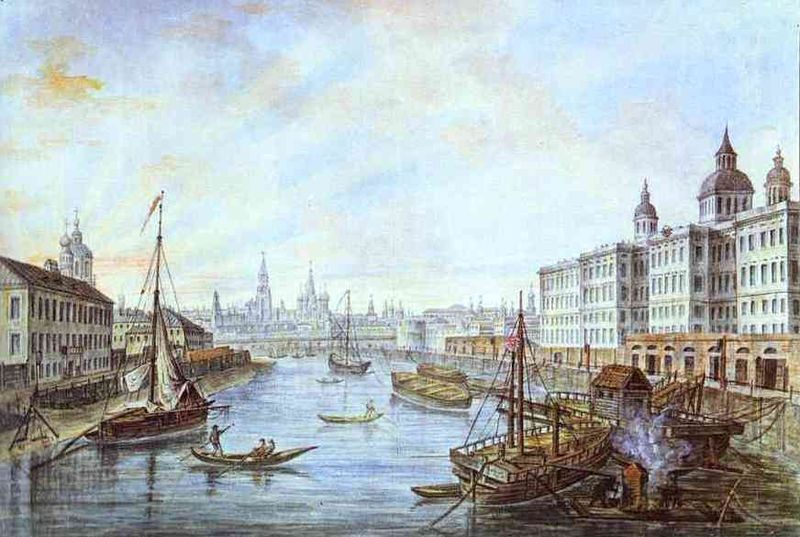| Fyodor Alekseyev | |
|---|---|
 |
|
| Born | c. 1753 |
| Died | November 23, 1824 |
| Nationality | Russian |
| Field | Painting |
| Works | View Complete Works |
Fyodor Alekseyev is almost certainly the first known Russian to achieve stellar success and an excellent reputation as a painter of landscapes. He was born in 1753 near St. Petersburg. It is also important to note that the spelling of his last name is alternately given as “Alekseyev” and “Alekseev.” Both of these refer to the same artist.
Early Training
Alekseyev received his early train at the Academy of Arts in St. Petersburg, and after 1773, went to Venice to study landscape style. Venice had a long tradition of producing great landscape painters. The stunning beauty and light of Venice was natural inspiration for Alekseyev. He was able to learn from several French and Italian masters during his tenure in Venice.
Finding His Way
 Upon returning from Venice, Alekseyev was faced with several years of drudgery working as a decorator and set painter for a theater school, and also painting knock-offs of the works of other great artists. He did what he needed to do to earn income while he honed his personal style and strived to make his own mark.
Upon returning from Venice, Alekseyev was faced with several years of drudgery working as a decorator and set painter for a theater school, and also painting knock-offs of the works of other great artists. He did what he needed to do to earn income while he honed his personal style and strived to make his own mark.
Even so, his work copying the art of others helped get him noticed and known, and Alekseyev was able to gain traction for his own work and career. By 1793, works such as View of the Palace Sea-front From the Castle of St. Peter and Paul helped solidify his reputation as an original artist of formidable talent.
Advancing Career
He spent some time between 1793 and 1800 in southern Russia painting the city and small town scenes of that region. In 1800, the Russian Emperor Paul I commissioned a number of painting featuring the cityscape of Moscow. A year in Moscow enabled him to complete several dozen works. Along with his pupils, 58 paintings of the ancient Russian capitol were produced. His works effectively captured the grandeur of Russian architecture, often making cold and dreary Moscow seem a bit more like warm, sunny Venice.
After completing his commissions from the Emperor, Alekseyev returned to St. Petersburg where he continued to produce a large volume of superior quality work. As a result, he enjoyed steady business in sales of his paintings, affording him a comfortable living. He died in 1824.